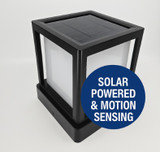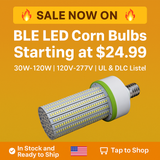Mercury In Lighting Products, What gives?
MERCURY
AND THE ENVIRONMENT
By Michael Roberts
Almost all modern lighting technologies depend on using mercury inside the lamp envelope for operation. When considering the environmental impact of the mercury in lighting, we must take three major factors into consideration:
• The type of mercury (solid or liquid) which is present in
the lamps,
•
The amount of mercury present in a particular type of lamp, and
•
The lifespan of the lamp which will determine the amount of mercury used per
hour of operation.


Liquid mercury, which is the most common form of mercury used in lighting, represents the greatest hazard. If a lamp is broken, the mercury can find its way into cracks in concrete flooring or into spaces in other floor coverings. Over time, the volatile liquid mercury will evaporate into the atmosphere causing a local “hot spot” of low-level contamination. The more liquid mercury present in a lamp, the longer the resulting contamination will last.
Mercury can be compounded, with other metals, into a solid form called an amalgam. This is the type of mercury used in induction lamps. It is similar to the once widely used “silver” amalgam used in dental fillings. The solid form of mercury poses much less of an environmental problem than liquid mercury. The small slug of amalgam can easily be recovered (always wear disposable gloves) in the case of induction lamp breakage and therefore can be disposed of properly with little or no risk of creating a locally contaminated area. The solid mercury amalgam is also simpler to recover for recycling at end of lamp life.
|
Mercury
amalgam for expired Induction lamps, when kept separate from other waste, can
be recycled safely. The mercury can be recovered from amalgam waste through a
distillation process and then reused in new products. If amalgam waste ends up
in an incinerated waste stream, the mercury can be released to the environment
due to the high temperatures used in the incineration process. Increasingly,
local communities are enacting restrictions on the incineration of wastes
containing mercury.
Mercury Utilization
The amount of mercury by lamp type and manufacturer varies as we can see from this table:

The chart below puts this information into visual form for the most common types of industrial, commercial and retail lighting technologies:

Induction Lighting Fixtures Reduce
Environmental Impact
The mercury
contained in Induction lights is in solid amalgam form, versus the highly
volatile liquid mercury found in other lighting technologies and is similar to
the type used for modern dental fillings. Magnetic Induction lights
impact mercury reduction with 3 different product features:
• Less mercury content per lamp than most commercial lamps
•
Solid amalgam mercury compared to the more volatile liquid mercury in most
lamps
•
Long 100,000 hours lamp life compared with all other commercial lamps
Depending
on the lamp type, an InductionLightingFixtures.com Induction lamp will add 5-40 times
less mercury to landfills over the duration of the light’s 100,000 hour
lifespan. Contact us for more information!
Recent Posts
-
How Long Will Solar Powered Lighting Operate in the Rain?
How Solar Light Fixtures Can Run for 10 Rainy Days If you’ve ever wondered how a Commercial solar li …Jul 30th 2025 -
Spotlight - The IL-SPG54 Smart Solar Walkway Light: Where Performance Meets Simplicity
Introducing the IL-SPG54 Smart Solar Walkway Light: Where Performance Meets Simplicity When it comes …Jun 16th 2025 -
Corn Bulb Sale - While supplies last!
⚡ Limited Time Sale – BLE Series Corn Lamps Starting at $24.99! Stock up now while supplies last – p …Jun 11th 2025






